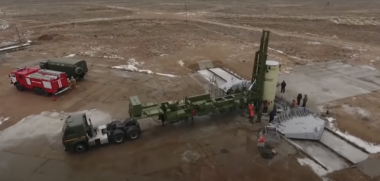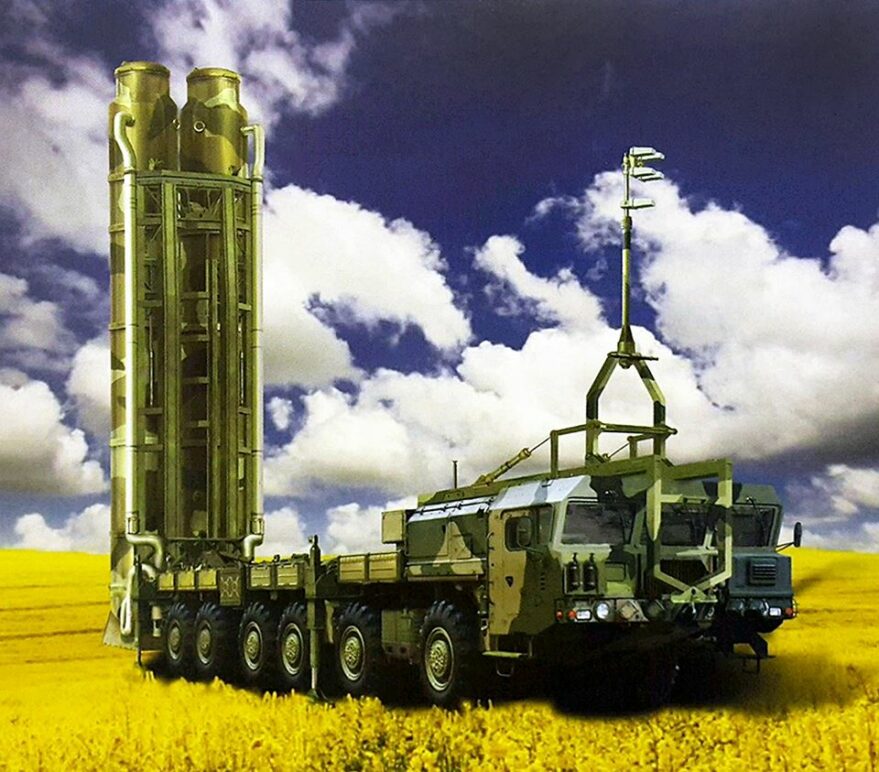Brandon W. Kelley and Brian G. Chow
Russia’s generation of a large amount of space debris deserves condemnation from the United States and others. However, we must also understand why Russia did what it did. This event carries two essential lessons for the United States.
First, it is imperative to adopt tailored policies and international legal rules to limit anti-satellite (ASAT) threats, in this case a ban on debris-producing ASAT tests.
Second, the U.S. must make it a priority to understand the perspectives and proactively shape the strategic incentives of other countries. A critical means of effectuating both is for the U.S. to be proactive in systematically identifying and understanding in advance the unique characteristics of each individual ASAT threat vector and the best means of countering it; scenario planning of the kind pioneered by Herman Kahn in the 1950s is likely to be a particularly effective methodology for doing so.
On Nov. 15, Russia conducted its first known exo-atmospheric hit-to-kill test of a ground-launched direct-ascent anti-satellite (DA-ASAT) weapon. This test produced some 1,500 pieces of larger debris, and Gen. James Dickinson, head of U.S. Space Command, noted that it will also “likely generate hundreds of thousands of pieces of smaller orbital debris.” The resultant debris cloud endangered astronauts — including Russian nationals — aboard the International Space Station, and drew immediate and widespread international condemnation. On Nov. 16,, Russia’s Defense Ministry publicly confirmed the ASAT test while denying the evident debris threat. What is going on?
The test was likely conducted to confirm that a DA-ASAT system known as the PL-19 Nudol is now operational. There have been at least 10 previous flight tests of the Nudol over the past eight years, including at least eight apparent successes. Russia began by testing solely the launch vehicle, then moved to test-launching from a road-mobile transporter-erector-launcher (TEL), then conducted launches incorporating the kill vehicle, and now has conducted the crowning event: demonstrating a real-world kinetic intercept capability. This is the same path previously tread by the United States, China, and India with respect to their own DA-ASATs.

A video still from an undated test of a Russian transporter-launched missile similar to the Nudol system analysts believe Russia used Nov. 15 to destroy a Soviet-era satellite. Credit: YouTube/Military Update
Russia posted a Notice to Airmen (NOTAM) for a missile launch from the Plesetsk mobile missile launch complex which aligned with the trajectory of the Russian satellite destroyed (Kosmos-1408), and a variety of statements by senior U.S. officials substantiate that the missile was a DA-ASAT. Historically, Russia’s ASAT program has consisted primarily of co-orbital and airborne capabilities; while the Soviet Union’s ballistic missile defense (BMD) system, the A-135, technically had some possible utility as an ASAT, it was very limited and deeply impractical. But in 2010, Russian defense company Almaz-Antey — tasked with developing so-called “active space defense” capabilities — began work on the replacement A-235 missile defense system as well as a directly related missile dubbed the Nudol. The latter was framed explicitly as valuable for holding at risk U.S. satellites in low earth orbit. This system was described in 2015 by the Russian state media as a mobile (i.e., launched from a transporter-erector-launcher (TEL)) “new Russian long-range missile defense and space defense intercept complex…within the scope of the Nudol OKR [experimental development project].”
The A-135’s interceptors — i.e. the 51T6 Gorgon — were nuclear-tipped, due to heavy skepticism regarding the reliability of conventional missile defense. While the environmental control systems visible on depictions of the Nudol indicate that it may retain the ability to mount a nuclear warhead, Russian media reports in 2018 indicated that the system would at least primarily be conventional. This is sensible, affording usability in a much wider range of circumstances, and is made possible in part because Russia has made major advances in space-based targeting and tracking, integrated command-and-control, and on-board guidance systems (for the original Russian, see here). Other major features of the Nudol include the fact that it is TEL-launched, as noted above, and that it employs a two-stage missile, likely capable of reaching an altitude of up to 850 kilometers (though demonstrations thus far have been more on the order of 100 kilometers) and enabling sophisticated guidance to target, whether a hypersonic glide vehicle or an orbital strike platform.
But all of this raises the question: why would Russia do this? It was not because they had no choice, nor were they ignorant of the consequences. Instead, the test appears to be the product of several factors.
One important element is very likely bureaucratic inertia/dynamics. Renowned Russia analyst Pavel Podvig labeled this test “very bizarre” and said that “with any reasonable decision-making system, I just don’t see how this type of thing would happen.” One piece of the puzzle is that the decision-making is not in fact unitary and rationalized, but is nonetheless predictable and coherent: factors such as the strong vested interest in Almaz-Antey building this system are important to bear in mind.
Second, Russia’s approach to counterspace issues must always be understood in the context of their fear, even paranoia, that the U.S. will pursue or achieve a splendid first-strike capability. Russia has ample reason to be concerned: the consistent pattern of historical U.S. behavior — from the 1983 announcement of the Strategic Defense Initiative, to the U.S.’s withdrawal from the ABM Treaty in 2002, to the periodic efforts to achieve a technically viable prompt global strike (PGS) capability and a space-based missile defense layer, to the persistent refusal to brook legal limits of any kind on BMD or space-based weapons — provides ample fodder for fevered speculation inside the Kremlin. Viewed through this prism, if one accepts the premise that the U.S. will or even might someday seek to base an existential threat to one’s nuclear arsenal in orbit, then demonstrating reliable means of quickly destroying those assets with Nudol ASATs begins to look like a highly rational insurance policy.
 Russian defense company Almaz-Antey included this image of a mobile launch system in a 2015 corporate calendar. Credit: Center for Analysis of Strategies and Technologies/Liveblog
Russian defense company Almaz-Antey included this image of a mobile launch system in a 2015 corporate calendar. Credit: Center for Analysis of Strategies and Technologies/LiveblogWhich brings us to the final critical piece of the puzzle: the United Nations’ upcoming Summit of the Future, to be held in September 2023. A ban on destructive anti-satellite testing has garnered increasingly broad-based support, and this ASAT test will likely add further momentum. But what is especially noteworthy is that while Russia has thus far voted against such proposals, now that they have successfully tested a DA-ASAT, they may no longer need to, or at least not as vociferously. Traditionally, Russia and China have demanded a treaty preventing the basing of weapons in space (known as the PPWT or PAROS) which conspicuously lacked any verifiable limitations on development of ground-based anti-satellite weapons. This is due to the aforementioned priority of limiting U.S. space-based missile defense. Since 2008, Russia has exploited the opening left by the U.S.’s failure to advocate viable alternatives in order to claim leadership and deflect criticism. While likely to continue pushing the PPWT in the background, it is also likely that Russia will seize the opportunity to disingenuously control the narrative by later flipping to endorse some version of a ban on kinetic ASAT testing.
Russia’s test of the Nudol last weekend holds vital lessons for the United States on space security. First, it is clearly necessary to build international consensus to prohibit debris-producing ASAT tests. Second, the U.S. must understand Russia’s perspective and be more proactive about shaping their strategic incentives in ways conducive to international stability and the U.S.’s national interest. For example: it will be important to secure Russian participation in a global space traffic management regime, but such an agreement must include limits on en masse pre-positioning near vulnerable satellites, a provision to which they are likely to be averse absent careful alignment of incentives.
If the U.S. treats this test as a wake-up call and seizes the opportunities available to it, the next couple years could constitute a major turning point in space security and sustainability. If, however, the U.S. fails to understand Russia’s perspective and recognize the importance of being proactive in shaping the strategic incentives of potential adversaries, then the future of both the space environment and the international sphere is likely to be much dimmer.
No comments:
Post a Comment